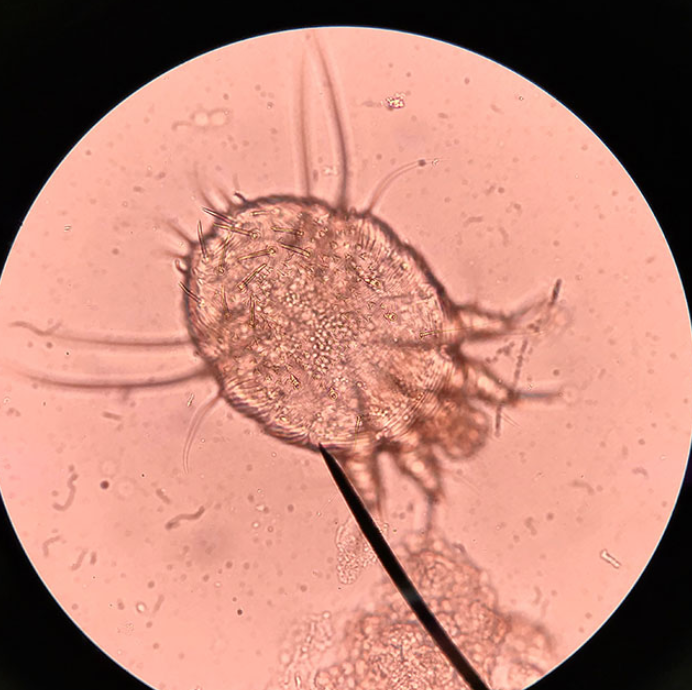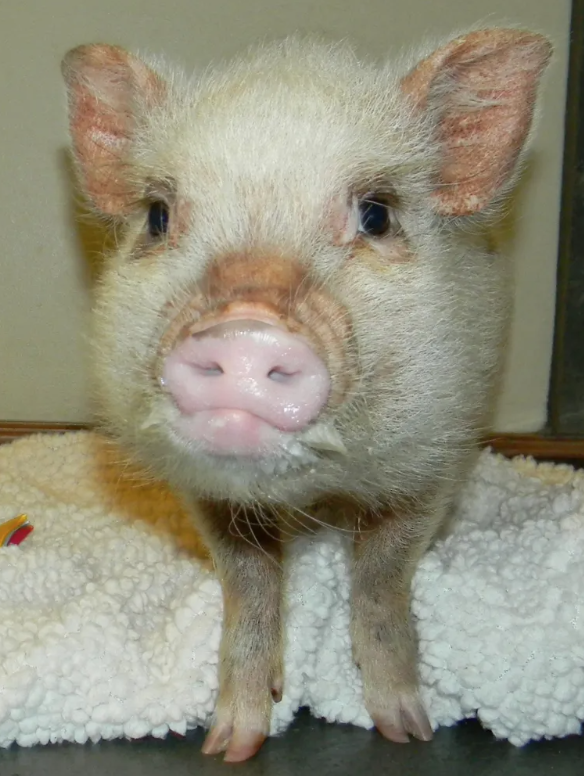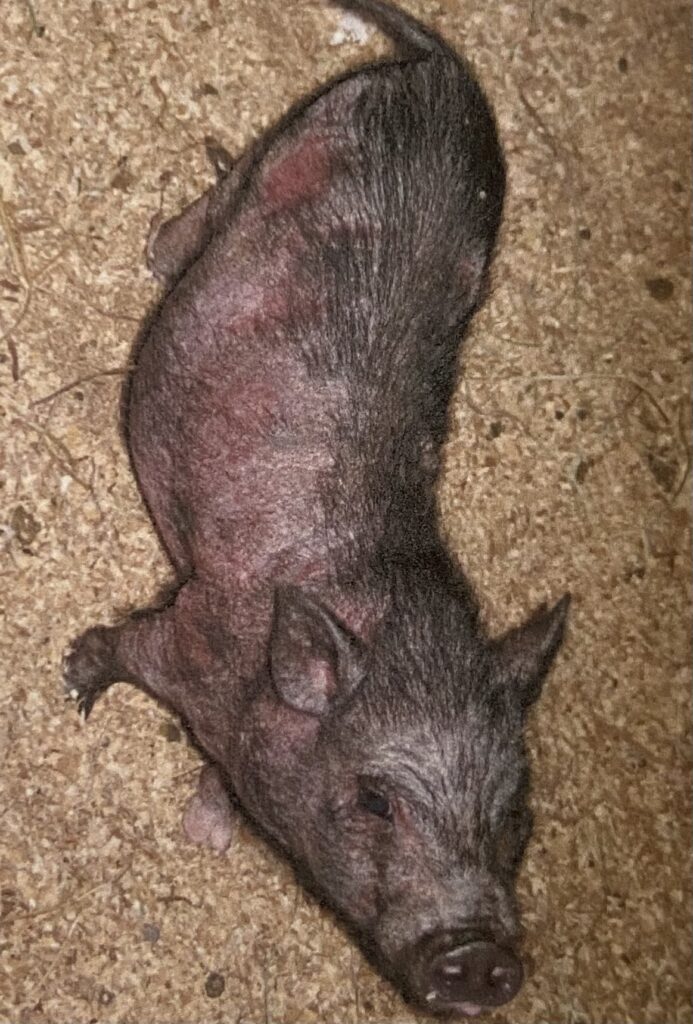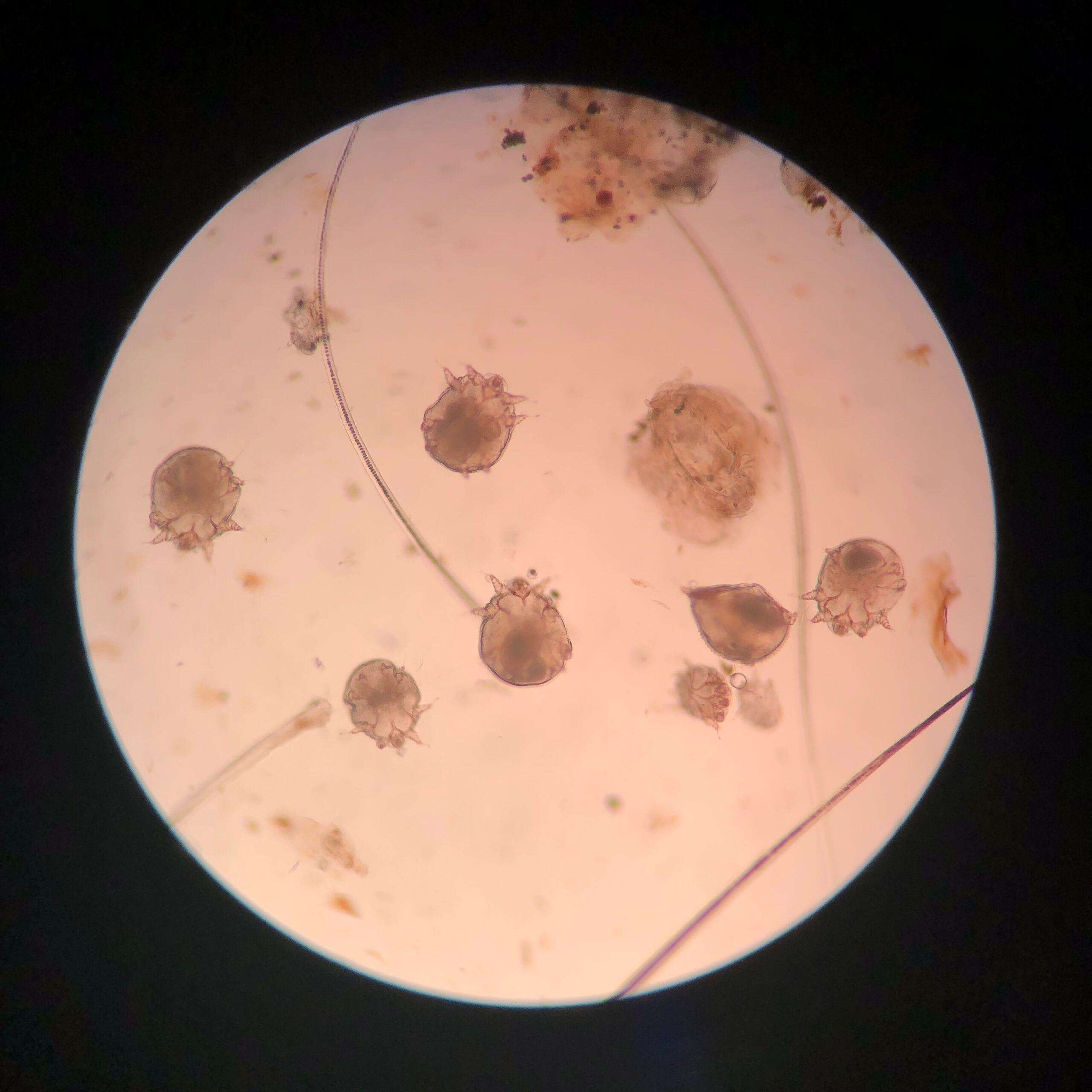Written by: Bria Osborne, OVC 2026
Edited by: Dr. Paisley Canning
What is Mange?
Mange is an extremely common and contagious parasite in pet pigs (figure 1). It is a type of mite (Sarcoptes scabiei var. Suis) that lives on your pigs skin and in their ears. It can also be hard to tell if your pig has mange as many pet pigs deal with dry skin that is independent of parasites.
While mange mites prefer to live on your pig, they can survive in the environment for days to months (depending on the environmental conditions). They are mostly transmitted by close contact with an infected animal but can also be transmitted from a contaminated environment.

Photo Credit: Government of Ontario
Figure 1: Mange is a microscopic mite that lives on your pig.
Mange causes a wide variety of symptoms. Your pig may experience some or all the following:
- Dry, thick, flakey, itchy skin (figures 2 – 5)
- Scabs on skin (figures 2-5)
- Hair loss (figures 4-5)
- Lethargy and Depression
- Redness and debris around ears, legs, and chest
- Thick scaly skin around hooves, and feet, inner groin area and neck

Photo credit: http://lifewithaminipig.com/mini-pig-mange-sarcoptic-mange-symptoms/
Figure 2: Above is a pet pig dealing with a mange infestation. Note the red colouring and dryness on their ears, snout, and legs.

Photo credit: Diagnostic challenge: Generalized erythema and pruritus in a miniature pot-bellied pig (Sus scrofa) by Bridget Lee-Chow, DVMa , David Eshar, DVM, DABVP (ECM), DECZM (SM & ZHM)
Figure 3: Above is a pig with a mange infestation. It is exhibiting red, dry, flakey skin all across its body.

Photo credit: Dr. Kristie Mozzachio
Figure 4: The pig above is experiencing red and dry skin accompanied by hair loss on the face and legs due to a mange infestation.

Photo Credit: Potbellied Pig Veterinary Medicine
Figure 5: Above is a pig that is also experiencing red and dry skin with hair loss.
The most susceptible and common types of pigs that have mange outbreak are as follows:
- Young pigs that are less than 1 year old
- Pigs that have never been treated for mange
- Pigs living in groups with other pigs
- Pigs that have experienced stress such as weaning, new owner, new home, new pet or child added to the home. Stress is a huge factor in preventing the pig’s immune system from fighting and clearing a mange mite infection
- Pregnant or lactating pigs
How to treat mange
Mange can prove to be a tricky condition to get rid of. The best way to get rid of mange is through ivermectin injections provided by your vet. Oral antiparasitic medications and pour on medication are not effective at treating mange in pigs. Pigs will often need multiple doses of ivermectin over a period of weeks or months. Following treatment, it may take many months for your pig’s skin to return to normal.
Why do some of my pigs have mange while others don’t?
Intensity of mange infestations can vary from pig to pig depending on individual levels of immunity. Therefore, some pigs may have a severe infestation, some may have mild infestation, and some may have no infestation at all. It’s very common for 1 pig to be affected much more severely than the rest of the group during a mange outbreak.
Can I get mange?
The mites that cause mange have zoonotic potential, meaning humans can be affected. In humans, mites cause itchy skin and rashes. Generally, people who are young, elderly, pregnant or immunocompromised are most likely to contact a mange infection from their pig. Consult your physician if you think you are dealing with mites and make sure you tell them that you have a pet pig.
If you suspect your pig is dealing with mange or you want to explore preventative measures, please reach out to Dr. Canning to form a treatment plan.
References:
https://lafeber.com/vet/basic-information-sheet-miniature-pig/
https://petpigs.com/education/disease-and-conditions/parasite-control/mange/

